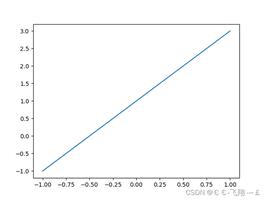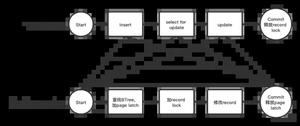python的zigzag实现及金融技术指标分析库

金融指标技术分析库:
https://github.com/twopirllc/pandas-ta
zigzag的实现:
"""reference:
https://github.com/jbn/ZigZag.git
"""
import numpy as np
PEAK = 1
VALLEY = -1
def identify_initial_pivot(X, up_thresh, down_thresh):
x_0 = X[0]
x_t = x_0
max_x = x_0
min_x = x_0
max_t = 0
min_t = 0
up_thresh += 1
down_thresh += 1
for t in range(1, len(X)):
x_t = X[t]
if x_t / min_x >= up_thresh:
return VALLEY if min_t == 0 else PEAK
if x_t / max_x <= down_thresh:
return PEAK if max_t == 0 else VALLEY
if x_t > max_x:
max_x = x_t
max_t = t
if x_t < min_x:
min_x = x_t
min_t = t
t_n = len(X)-1
return VALLEY if x_0 < X[t_n] else PEAK
def peak_valley_pivots(X, up_thresh, down_thresh):
"""
Find the peaks and valleys of a series.
:param X: the series to analyze
:param up_thresh: minimum relative change necessary to define a peak
:param down_thesh: minimum relative change necessary to define a valley
:return: an array with 0 indicating no pivot and -1 and 1 indicating
valley and peak
The First and Last Elements
---------------------------
The first and last elements are guaranteed to be annotated as peak or
valley even if the segments formed do not have the necessary relative
changes. This is a tradeoff between technical correctness and the
propensity to make mistakes in data analysis. The possible mistake is
ignoring data outside the fully realized segments, which may bias
analysis.
"""
if down_thresh > 0:
raise ValueError('The down_thresh must be negative.')
initial_pivot = identify_initial_pivot(X, up_thresh, down_thresh)
t_n = len(X)
pivots = np.zeros(t_n, dtype=np.int_)
trend = -initial_pivot
last_pivot_t = 0
last_pivot_x = X[0]
pivots[0] = initial_pivot
# Adding one to the relative change thresholds saves operations. Instead
# of computing relative change at each point as x_j / x_i - 1, it is
# computed as x_j / x_1. Then, this value is compared to the threshold + 1.
# This saves (t_n - 1) subtractions.
up_thresh += 1
down_thresh += 1
for t in range(1, t_n):
x = X[t]
r = x / last_pivot_x
if trend == -1:
if r >= up_thresh:
pivots[last_pivot_t] = trend
trend = PEAK
last_pivot_x = x
last_pivot_t = t
elif x < last_pivot_x:
last_pivot_x = x
last_pivot_t = t
else:
if r <= down_thresh:
pivots[last_pivot_t] = trend
trend = VALLEY
last_pivot_x = x
last_pivot_t = t
elif x > last_pivot_x:
last_pivot_x = x
last_pivot_t = t
if last_pivot_t == t_n-1:
pivots[last_pivot_t] = trend
elif pivots[t_n-1] == 0:
pivots[t_n-1] = -trend
return pivots
def max_drawdown(X):
"""
Compute the maximum drawdown of some sequence.
:return: 0 if the sequence is strictly increasing.
otherwise the abs value of the maximum drawdown
of sequence X
"""
mdd = 0
peak = X[0]
for x in X:
if x > peak:
peak = x
dd = (peak - x) / peak
if dd > mdd:
mdd = dd
return mdd if mdd != 0.0 else 0.0
def pivots_to_modes(pivots):
"""
Translate pivots into trend modes.
:param pivots: the result of calling ``peak_valley_pivots``
:return: numpy array of trend modes. That is, between (VALLEY, PEAK] it
is 1 and between (PEAK, VALLEY] it is -1.
"""
modes = np.zeros(len(pivots), dtype=np.int_)
mode = -pivots[0]
modes[0] = pivots[0]
for t in range(1, len(pivots)):
x = pivots[t]
if x != 0:
modes[t] = mode
mode = -x
else:
modes[t] = mode
return modes
def compute_segment_returns(X, pivots):
"""
:return: numpy array of the pivot-to-pivot returns for each segment."""
pivot_points = X[pivots != 0]
return pivot_points[1:] / pivot_points[:-1] - 1.0
使用示例:
import matplotlibmatplotlib.use("TkAgg")
import matplotlib.pyplot as plt
import numpy as np
import pandas as pd
import sys
import pathlib
sys.path.append("%s/zigzag" % pathlib.Path().absolute())
from zigzag import zigzag
def plot_pivots(X, pivots):
plt.xlim(0, len(X))
plt.ylim(X.min()*0.99, X.max()*1.01)
plt.plot(np.arange(len(X)), X, 'k:', alpha=0.5)
plt.plot(np.arange(len(X))[pivots != 0], X[pivots != 0], 'k-')
plt.scatter(np.arange(len(X))[pivots == 1], X[pivots == 1], color='g')
plt.scatter(np.arange(len(X))[pivots == -1], X[pivots == -1], color='r')
np.random.seed(1997)
X = np.cumprod(1 + np.random.randn(100) * 0.01)
pivots = zigzag.peak_valley_pivots(X, 0.03, -0.03)
plot_pivots(X, pivots)
plt.show()
modes = zigzag.pivots_to_modes(pivots)
print(pd.Series(X).pct_change().groupby(modes).describe().unstack())
print(zigzag.compute_segment_returns(X, pivots))
pandas 的数据输入示例:
from pandas_datareader import get_data_yahooX = get_data_yahoo('GOOG')['Adj Close']
pivots = peak_valley_pivots(X.values, 0.2, -0.2)
ts_pivots = pd.Series(X, index=X.index)
ts_pivots = ts_pivots[pivots != 0]
X.plot()
ts_pivots.plot(style='g-o');
以上是 python的zigzag实现及金融技术指标分析库 的全部内容, 来源链接: utcz.com/z/387143.html







